
In economics, the Gini coefficient, also known as the Gini index or Gini ratio, is a measure of statistical dispersion intended to represent the income inequality, the wealth inequality, or the consumption inequality within a nation or a social group. It was developed by Italian statistician and sociologist Corrado Gini.

Poland, officially the Republic of Poland, is a country in Central Europe. It is divided into 16 administrative voivodeship provinces, covering an area of 312,696 km2 (120,733 sq mi). Poland has a population of over 38 million and is the fifth-most populous member state of the European Union. Warsaw is the nation's capital and largest metropolis. Other major cities include Kraków, Wrocław, Łódź, Poznań, and Gdańsk.

The economy of Poland is an industrialised, mixed economy with a developed market that serves as the sixth-largest in the European Union by nominal GDP and fifth-largest by GDP (PPP). Poland boasts the extensive public services characteristic of most developed economies. Since 1988, Poland has pursued a policy of economic liberalisation but retained an advanced public welfare system. This includes universal free public healthcare and education, extensive provisions of free public childcare, and parental leave. The country is considered by many to be a successful post-communist state. It is classified as a high-income economy by the World Bank, ranking 20th worldwide in terms of GDP (PPP), 21st in terms of GDP (nominal), and 21st in the 2023 Economic Complexity Index.
In economics, shock therapy is a group of policies intended to be implemented simultaneously in order to liberalize the economy, including liberalization of all prices, privatization, trade liberalization, and stabilization via tight monetary policies and fiscal policies. In the case of post-Communist states, it was implemented in order to transition from a command economy to a market economy.

Economic inequality is an umbrella term for a) income inequality or distribution of income, b) wealth inequality or distribution of wealth, and c) consumption inequality. Each of these can be measured between two or more nations, within a single nation, or between and within sub-populations.

In economics, income distribution covers how a country's total GDP is distributed amongst its population. Economic theory and economic policy have long seen income and its distribution as a central concern. Unequal distribution of income causes economic inequality which is a concern in almost all countries around the world.
A transition economy or transitional economy is an economy which is changing from a centrally planned economy to a market economy. Transition economies undergo a set of structural transformations intended to develop market-based institutions. These include economic liberalization, where prices are set by market forces rather than by a central planning organization. In addition to this trade barriers are removed, there is a push to privatize state-owned enterprises and resources, state and collectively run enterprises are restructured as businesses, and a financial sector is created to facilitate macroeconomic stabilization and the movement of private capital. The process has been applied in China, the former Soviet Union and Eastern bloc countries of Europe and some Third world countries, and detailed work has been undertaken on its economic and social effects.

The Mława riot, or Mława incident, or Mława pogrom, was a series of violent devastations and looting incidents on 26–27 June 1991 when a group of youth estimated at 200 individuals, including young females, invaded the homes of Roma residents of the Polish town of Mława causing them to flee. Not a single Roma person was injured in the riot, but the material losses were substantial, affecting up to 40% of residences. Many perpetrators were arrested on-site; a number of them sentenced to jail after a trial. The violence was described as motivated by racism and jealousy. The incident that triggered the riot was the killing of a Polish pedestrian struck along with his companion in a hit-and-run by a Romani male driver.
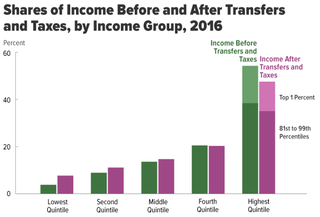
Income inequality has fluctuated considerably in the United States since measurements began around 1915, moving in an arc between peaks in the 1920s and 2000s, with a 30-year period of relatively lower inequality between 1950 and 1980.
Poverty in Canada refers to the state or condition in which a person or household lacks essential resources—financial or otherwise—to maintain a modest standard of living in their community.
Michał Rutkowski is a Polish economist and a World Bank Regional Director for Human Development in the Europe and Central Asia region of the World Bank. Before July 1, 2023, he was Global Director for Social Protection, and Jobs in the World Bank. Before this position, he was Director for Multilateral Organizations (2015–16), and earlier he was World Bank Country Director for the Russian Federation and a Resident Representative in Moscow (2012–15). He is a former Director for human development in the South Asia region of the World Bank. He is the highest-ranked Polish official at the World Bank headquarters in Washington, DC, and also a former Director of the Office for Social Security Reform in the Government of Poland (1996–97), as well as a co-author of the design of the new Polish pension system. A graduate of the Warsaw School of Economics, with post-graduate studies at the London School of Economics (1989–90) and Harvard Business School (1999). Before joining the World Bank in 1990 Rutkowski was an assistant professor at the Warsaw School of Economics and did research work in the area of labor economics, macroeconomics, education, business development and productivity in the Centre for Labour Economics and the Centre for Economic Performance at the London School of Economics. As a member of the secretariat of the Consultative Economic Council to the Polish government he also advised on early issues of economic and social transition to a market economy in Poland. He was also involved in interdisciplinary development endeavors as a member of the Polish Association for the Club of Rome and the British Association for the Club of Rome.
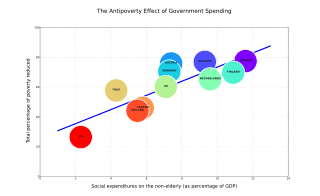
The effects of social welfare on poverty have been the subject of various studies.
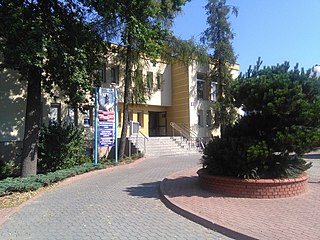
Welfare in Poland is part of the social security system in Poland. It constitutes about 20% of government spending, and has been roughly stable in the past several decades. The Constitution of Poland states that all citizens have the right to social security in case of being unable to find a job, reaching the retirement age, or suffering from inability to work due to illness or disability. In detail, the law on welfare in Poland is covered by a 2003 law, updated several times, including in 2012.
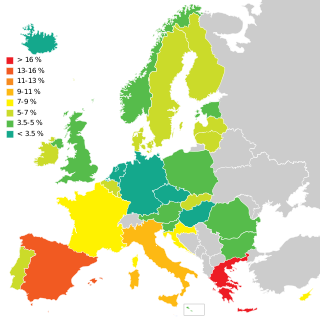
Unemployment in Poland appeared in the 19th century during industrialization, and was particularly severe during the Great Depression. Under communist rule Poland officially had close to full employment, although hidden unemployment existed. After Poland's transition to a market economy the unemployment rate sharply increased, peaking at above 16% in 1993, then dropped afterwards, but remained well above pre-1993 levels. Another period of high unemployment occurred in the early 2000s when the rate reached 20%. As Poland entered the European Union (EU) and its job market in 2004, the high unemployment set off a wave of emigration, and as a result domestic unemployment started a downward trend that continued until the onset of the 2008 Great Recession. Recent years have seen an increase in the unemployment rate from below 8% to above 10% (Eurostat) or from below 10% to 13% (GUS). The rate began dropping again in late 2013. Polish government (GUS) reported 9.6% registered unemployment in November 2015, while European Union's Eurostat gave 7.2%. According to Eurostat data, since 2008, unemployment in Poland has been constantly below the EU average. Significant regional differences in the unemployment rate exist across Poland.
Poverty in Cyprus is not well documented, yet is still considered a major problem by the Cypriot government. Due to strong kinship bonds among extended families, poverty in Cyprus primarily affects those outside kinship networks, such as immigrants, divorcees and singles from small families. One study found a strong correlation between increased poverty and small family size. Poverty is also more likely to affect the elderly than the young, as a result of income to pensions raising the dependency levels.
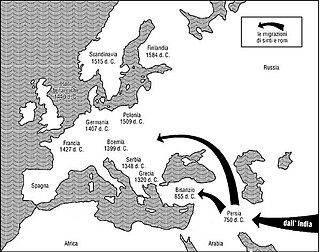
The Romani people, also known as the Roma, qualify as an ethnic minority group in Poland of Indo-Aryan origins. The Council of Europe regards the endonym "Roma" more appropriate when referencing the people, and "Romani" when referencing cultural characteristics. The term Cyganie is considered an exonym in Poland.
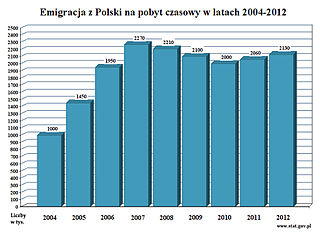
Since the fall of communism in 1989, the nature of migration to and from Poland has been in flux. After Poland's accession to the European Union and accession to the Schengen Area in particular, a significant number of Poles, estimated at over two million, have emigrated, primarily to the United Kingdom, Germany, France and Ireland. The majority of them, according to the Central Statistical Office of Poland, left in search of better work opportunities abroad while retaining permanent resident status in Poland itself.
Sweden enjoys a relatively low income inequality and a high standard of living. Unemployment as of 2017 was estimated to be 6.6% by the CIA World Fact Book, lower than in other European Union countries. The Nordic model of a social welfare society exemplified by Sweden and its near neighbours has often been considered a European success story compared internationally with the socioeconomic structures of other developed industrial nations. This model of state provided social welfare includes many unemployment benefits for the poor, and amply funded health, housing and social security provision. within essentially corruption free nations subscribing to principles of a measure of openness of information about government activity. The Income inequality in Sweden ranks low in the Gini coefficient, being 25.2 as of 2015 which is one of the lowest in the world, and ranking similarly to the other Nordic countries; although inequality has recently been on the rise and several central European countries now have a lower Gini coefficient than Sweden.

















